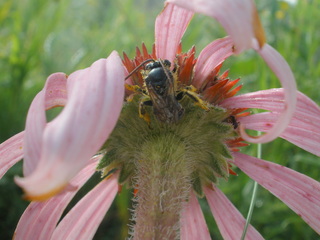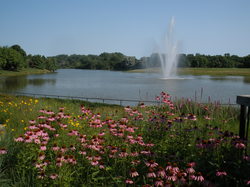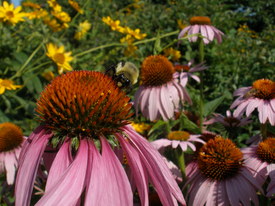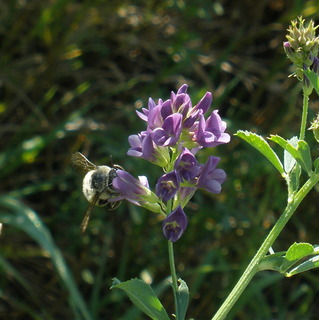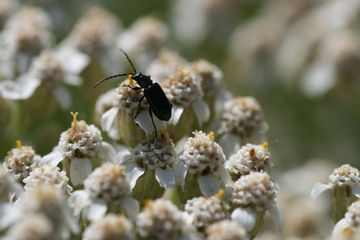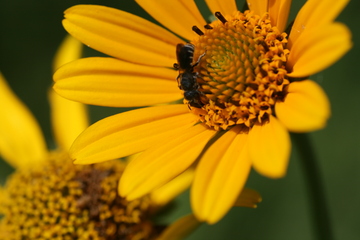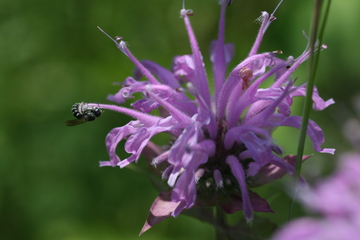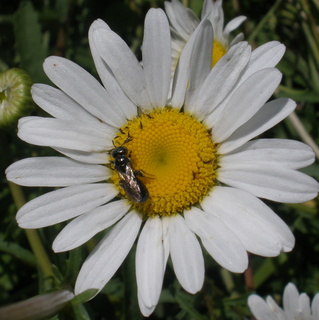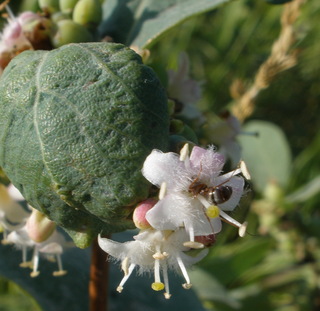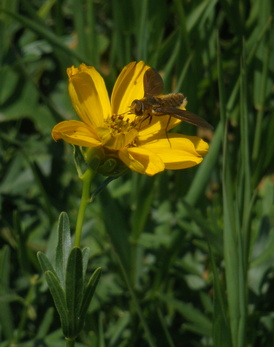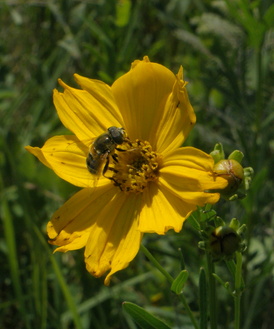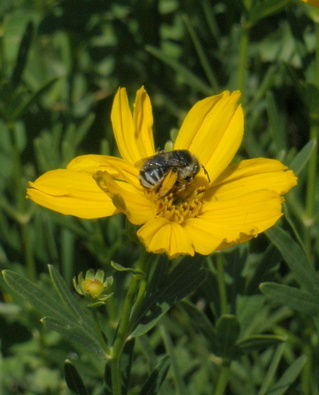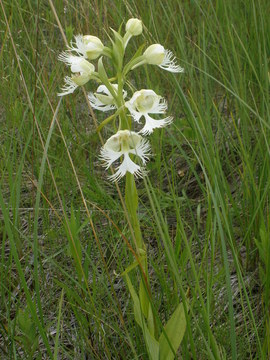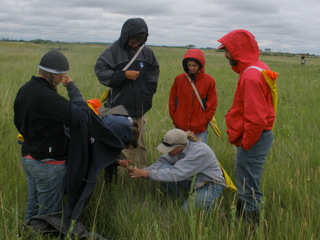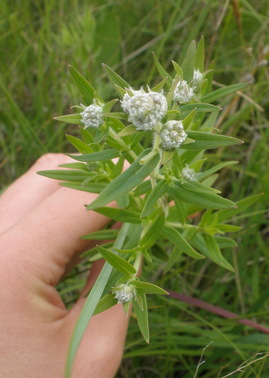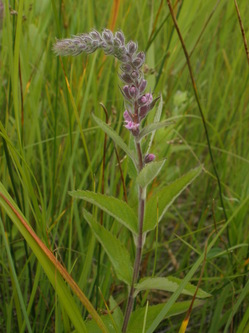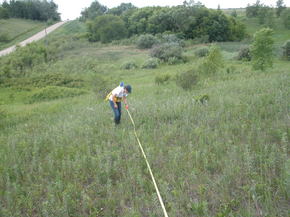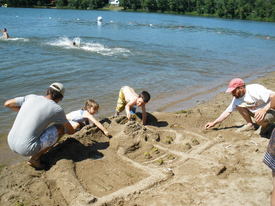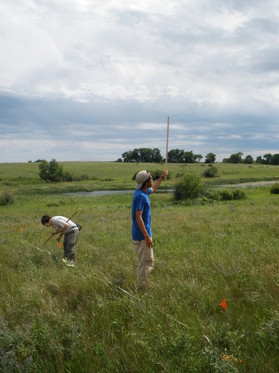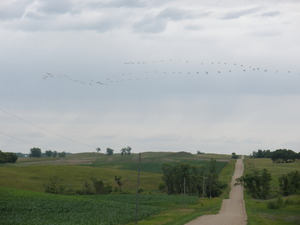|
|
Howdy gang!
Here’s the list of tag ID’s and corresponding letters at the sites used this summer. We flagged different plants on 7/13 and 7/6 and used the same plants for observations on 7/21 and 7/23. For some reason I can’t find the list of flagged plants for 7/13, so it would be great if someone could check on the Hjelm house computer for that info. It may or may not be in the folder for this experiment. I’m sure I compiled that info from the visor memos, but I don’t have the file on my computer.
ech flagged plants and tags.doc
We recorded the tag ID’s during FNC so we could go back and check to make sure we had recorded the right number, but we never made the check.
Here’s the file that lists whether the vial had a bee, fly, bfly, or beetle in it:
ECH poll obs ALL.xls
Here’s the FNC Data in an excel file:
ECH FNC.xls
I hope everything’s going well in MN! It sounds like lots of progress has been made since I left. I thought my poster presentation went pretty well back in Chi-town. The final version of it is in a previous flog post. Thanks again to everyone…I certainly could not have done this without all of your help. I hope the field season ends well. Keep in touch. Oh and here’s an interesting paper I came across recently: brown bj loosestrife comp.pdf
And I really like this picture Daniel took:

And here’s Echinacea taking center stage at CBG:


2 graphs that are basically the same as the one with alfalfa on my poster, bu tusing sweet clover and amorpha instead. Although amorpha is the most common native species in floral neighborhoods per unique plant, there are only 43 plants that had either just amorpha, just echinacea, both , or neither. For sweet clover, the sample size is 82, but the graph isn’t very impressive either….
Do you think either one is usable? I originally wanted to use the most common native and the most common exotic (alfalfa and amorpha).
ecan amca meof comparison graphs.xls
Hey yall,
Back in Chi town finally after about 10 hrs of traveling. I said “Get er done” to someone today out of habit and got a weird look. Thanks guys. I’m also going through baked goods and other delicious foods withdrawal.
Final version of poster: Jenkins REU09.pdf
Hope everyone’s doing well in K-town! I miss yall already…and my bike 🙁
ps. I knew Roxy would come through for us. Warren should’ve known better after the snake incident.
Here is the data that’s been compiled for FNC, pollinator observations, within 10 m, and the isolation measure of flowering Echinacea focal plants.
Some things I wanted to point out that may or may not make a difference:
>In the FNC data, all quadrants with none present have no data for distances, and sometimes there is only one distance if there was only 1 infl of a species within a quadrant…
>I still need to check each tag number that we recorded for FNC and make sure it coincides with the original record of tags we made when we flagged.
>For the isolation measure, I put in 11 for distances >10m. I marked the original distance in the notes in cases where they were >10m but measured out (i.e.SPP)
>For inflorescence counts>100, I put in 1000. In the comparison file below, we changed 1000 to 101 since we had to sum the inflct for each unique ID and so some of the infl ct were showing up as >1000.
ISOLATION.csv
FNC.csv
POLLOBSWITHFLIES.csv
POLLOBSWITHOUTFLIES.csv
WITHIN10M.csv
pollcomparison ecan mesa amca.csv
ech mesa comparison with mean std error.csv
ech amca comparison with mean sterror.csv
As of 8/3:The last 2 files are new. In order to make the graph that appears on my poster, we divided the unique Id’s into 4 groups: 1-alfalfa only in fl.neighborhood 2-ech only 3-both 4-neither. I took the average and standard error from each of those 4 groups to make the 4 bars on the graph. I want to do the same thing for Amorpha. So I attached the file that I’d use to make the same graph but with amorpha. You could use the third to last file which has infl ct for each unique ID for ecan, mesa, and amca to do the analysis but I figured I’d put the others up so you could know how I made the graph…
FYI, after Amanda and I looked at all the vials yesterday, it turns out that over our 4 day stint we had 132 bees, 13 scsf, 33 flies, 4 butterflies, 15 beetles. Good work everyone!
Here’s some of the work I’ve done with organizing my data. I still need to figure out how to organize it to be able to analyze it, so this is mostly just preliminary work. I have about 2 weeks to put this all together….any help/advice is appreciated because right now, the data I have is a little overwhelming. There are 3 sheets in this document.
Ech Guide to Co-Fl Sp.xls
For next week, it looks like the weather should hold up for Tues and Thurs to be able to do pollinator observations. So we will need to flag the sites on Monday and have everything ready to go for Tuesday. Remember, you ALWAYS record something for each observation you make, regardless of whether or not you observed/caught a pollinator. Select No for poll. observed and No for pollinator caught if this is the case. Some things I wanted to clear up for people helping with FNC:
>If you reach 100 when counting inflorescences, stop and record >100.
>When recording the species within 10m, you will no longer put this into a memo. Instead you will always select pl A, record 0 for infl ct, and in the field of quadrants, select the fifth option called “within 10m”.
>Review the guide to co-flowering sp for how to count infl or print one up and ask me if you have questions.
>If you come across a new species that isn’t in the list of species in the form, record in the notes not only the species but also a brief description of how you counted inflorescences.
Thanks!
Here’s some of the pollinators I saw on Coreopsis near Hegg Lake. They seemed to only be pollinating Coreopsis although there were other species like Achillea, Amorpha, and Echinacea around.




On Friday all of us except Greg went on a trip to a mesic prairie 3 hours away to help Gretel look for orchids. We split into 3 groups of 3 and flagged the flowering plants within the various treatment grids.

The Western Fringed Prairie Orchid, Pratanthera praeclara a threatened species. The first orchid I’ve seen in the wild!

Allegra, Amanda, Daniel, Caroline, Amy, Stuart–it was pretty cold for mid-July!

Mountain mint–Pycnanthemum sp. It was really neat to see some different species found in the mesic prairie, as well as some familiar ones. Some others plants we saw were Liatris, Rudbeckia hirta, Apocynum, Lilium philadelphicum,, Asclepias incarnata, A. speciosa, and Campanula. Below is another mint, whose name I can’t remember:

Thanks Gretel for letting us help!
Ech jenkins FNC protocol revised.doc
Ech Guide to Co-Fl Sp.xls
I have a photo guide but I can’t upload it b/c the file is too large.
If you plan on helping with FNC, please read the documents above. It’s important that everyone counts inflorescences the same way. Thanks!
Also, for tomorrow, there are a couple of notes I thought I’d add:
>Please make a note if you see ants on the head of the plant you are observing.
>Also make a note if it is mostly cloudy.
>Try to get to your site with about 10 min to spare so you can get your supplies ready and orient yourself with the placement of the flags to avoid time spent wandering in search of flags.
>Please try to start your observation as close to 8am as possible. End at 11am. Do not start an observation if you can’t finish by 11.
>Remember that you will only be collecting styles at the end of the observation pd from now on. Clean your tweezers with your shirt in between collections.
Thank you thank you thank you to everyone for helping this week. Just in terms of my project, we characterized floral neighborhoods for almost 70 plants in three days. In terms of pollinator observations, Tuesday’s escapades in the remnants were fruitful, but thursday’s weather would not hold out for us, so we had to postpone the second day of observations to next week, meaning we will have to randomly select a different set of 8 plants for all 10 remnants. I expect to see some more diversity in the neighborhoods next week because some species are just starting to flower like Coreopsis, Dalia, Apocynum, and Amorpha.
Here;s Amanda measuring to the nearest flowering Echinacea in Aanenson’s:

Here’s some pictures of our fun 4th of July and the amazing sustainable sandcastle.

Waniel, Per, and Hattie

Yesterday Daniel told us we could have a romantic walk in Staffanson Prairie if we came with him, but instead he made kate and I search his and Amy’s transects. What a trickster. Here he is cursing the heavens.

A flock of pelicans flew overhead at NWLF.

I have many more pictures http://picasaweb.google.com/mimijenkins/MinnesotaSummer09# in case you’re interested.
Amanda, Kate, and I have combined our protocols and I’ve included a revised equipment list.
Echinacea PONS equip list.doc
Ech combined PollComp Protocols.doc
The following people have agreed (I think) to help with this project on the mornings of July 7th and July 9th, as well as July 21st and July 23rd. If you cannot for some reason, let us know tomorrow.
Stuart, Gretel, Caroline, Amy, Daniel, Greg, Megan, Mimi, Amanda, Kate. Thanks everyone!
Also, after some discussion with Allegra about her pollination and painting needs for this week, I think that we need to either A) give up one person and therefore one remnant to help Allegra or B) have the normal 4 observations for remnants with less than 8 plants instead of doing more observations within the 3 hr pd, and have those people help Allegra when they are done early with pollinator observations/style collection or C) a combination of A&B. Thoughts?
Note: I have included the protocol in with pollinator observations and style collections because we are using the same plants for all 3. However, 3 people can do this over the course of 3 pm’s. Those who are helping so far are: Kate, Allegra (when not doing pm pollinations)
Friday we practiced catching insects for a half hour but much more practice is needed and those who were not there on friday need to be trained. I think a group training/practicing session before lift-off is imperative.
Today Daniel and Allegra helped me assess the flowering plants situation at some of the remnants we plan on using. We flagged flowering plants at: Riley (5),YOH (3), NRRX (4), LC (8), Steven’s appch (3). Some of these sites had plants that seemed likely to flower by Tuesday so we flagged those plants as well.We randomly selected 8 plants for LC since there were 17 that were either flowering or seemed very likely to flower by Tuesday. There was only 1 plant flowering at NWLF so that site has been eliminated. We also noted co-flowering species for each remnant. Tomorrow we need to finish flagging and randomly selecting plants at the 5 other remnants.
Stay tuned for July 4th picnic and kick-ass sandcastle pictures!
|
|
